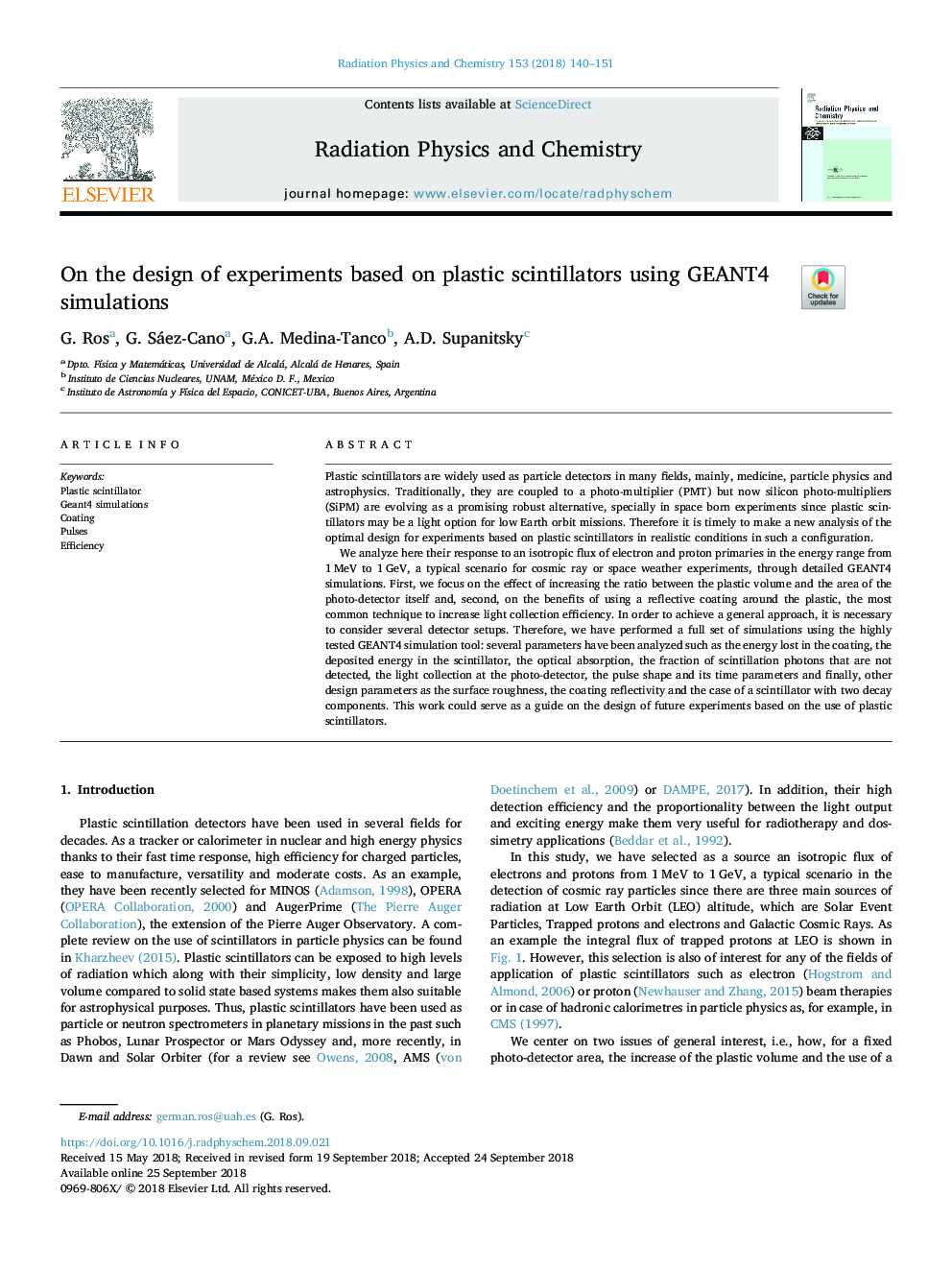| Article ID | Journal | Published Year | Pages | File Type |
|---|---|---|---|---|
| 11029442 | Radiation Physics and Chemistry | 2018 | 12 Pages |
Abstract
We analyze here their response to an isotropic flux of electron and proton primaries in the energy range from 1â¯MeV to 1â¯GeV, a typical scenario for cosmic ray or space weather experiments, through detailed GEANT4 simulations. First, we focus on the effect of increasing the ratio between the plastic volume and the area of the photo-detector itself and, second, on the benefits of using a reflective coating around the plastic, the most common technique to increase light collection efficiency. In order to achieve a general approach, it is necessary to consider several detector setups. Therefore, we have performed a full set of simulations using the highly tested GEANT4 simulation tool: several parameters have been analyzed such as the energy lost in the coating, the deposited energy in the scintillator, the optical absorption, the fraction of scintillation photons that are not detected, the light collection at the photo-detector, the pulse shape and its time parameters and finally, other design parameters as the surface roughness, the coating reflectivity and the case of a scintillator with two decay components. This work could serve as a guide on the design of future experiments based on the use of plastic scintillators.
Related Topics
Physical Sciences and Engineering
Physics and Astronomy
Radiation
Authors
G. Ros, G. Sáez-Cano, G.A. Medina-Tanco, A.D. Supanitsky,
